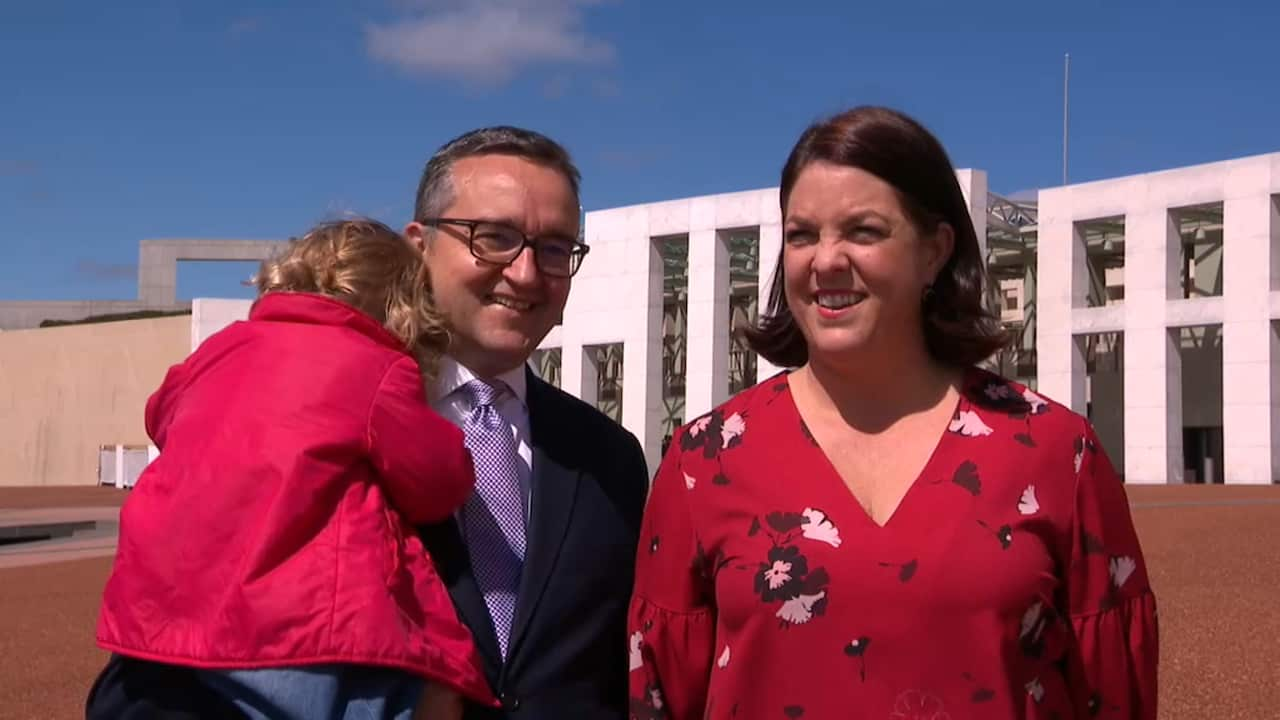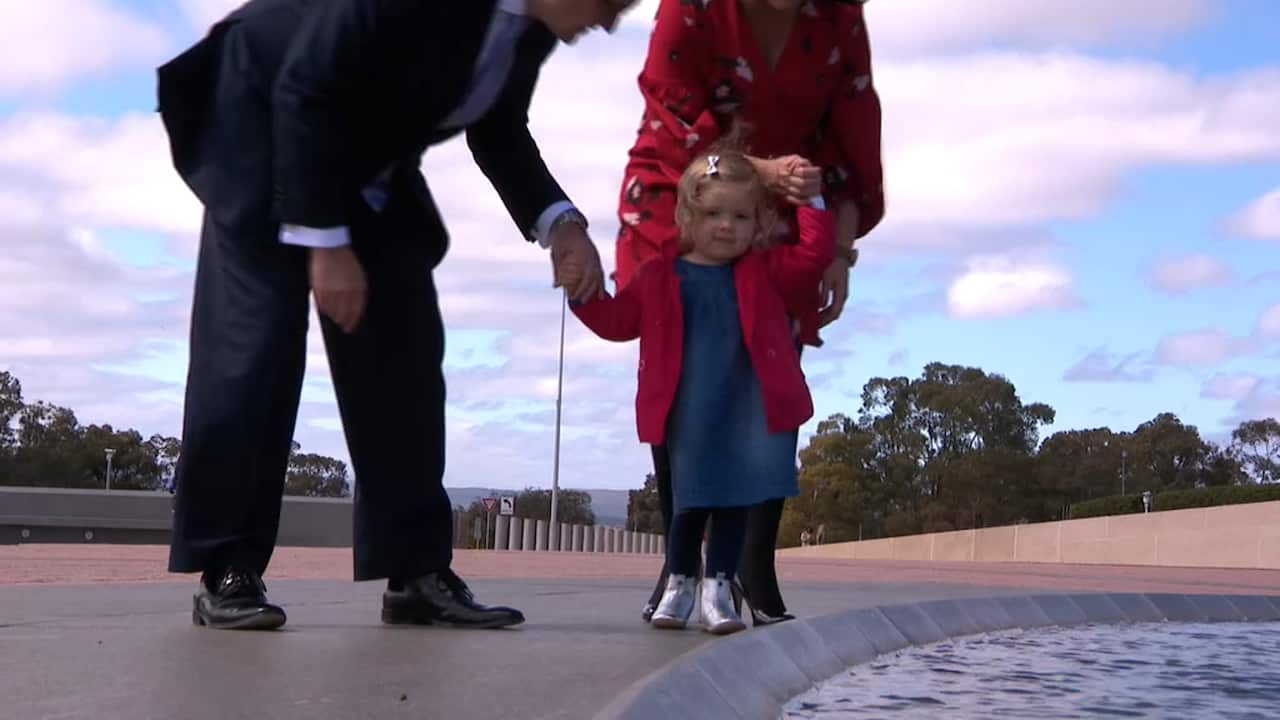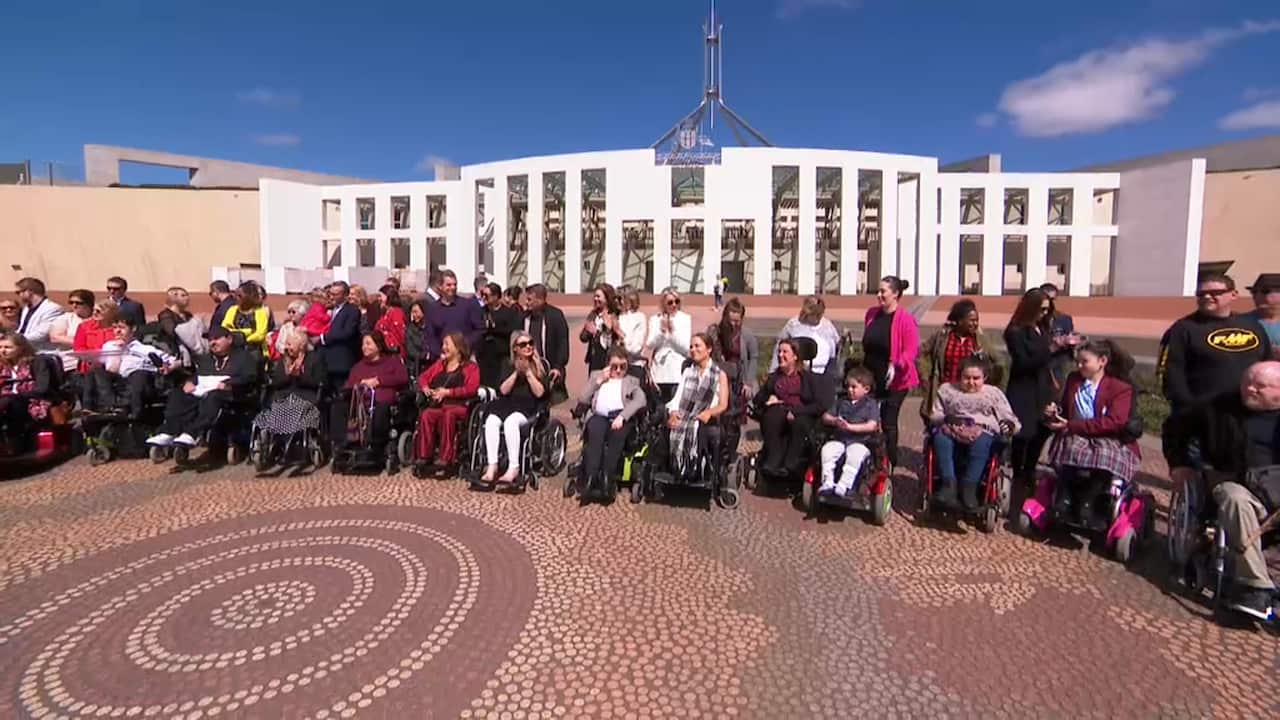It didn't take long for Seona and Hugo Donald to realise something was amiss with their daughter Matilda.
At just three months old, Matilda was experiencing tremors, reflux, and was unable to bear any weight on her legs.

Hugo and Seona McDonald with their daughter Matilda. Source: SBS News
"She was never able to sit up unsupported," Ms Donald told SBS News.
"She had started rolling at seven months, but by 10 months had stopped rolling, which was obviously quite alarming to us."
Not long after, Matilda was diagnosed with type 1 spinal muscular atrophy.
What is spinal muscular atrophy?
Spinal muscular atrophy, or SMA, is a genetic condition that affects the nerves that control muscle movement.
SMA is classified by physical milestones achieved.
Type 1 shows symptoms at birth - most children with type 1 SMA do not live beyond the age of two.
The milder type 4 symptoms appear in adults, who may not develop severe disability, and can have a normal life expectancy.
SMA affects about one in 6,000 babies and one in 40 people carry the gene.

Three-year-old Holly McDonald has defied the odds to walk. Source: SBS News
In the past, such a diagnosis was a death sentence, but thanks to treatment with the drug Spinraza, Matilda is now a thriving three year old.
But currently, Spinraza is only available on the Pharmaceuticals Benefit Scheme for people under the age of 18.
New government commitment
On Wednesday, Health Minister Greg Hunt guaranteed that with the recommendation of medical experts, the government will list the drug for adults as well.
"We make this guarantee, that just as we did for spinraza for under 18s, if the medical experts recommend it, we will list it," he said.
"We've had very good relations with the company, and I hope, and I pray and I now believe that they will make a recommendation."
Dr Michelle Farrar, from the Sydney Children's Hospital, said with medical advances like spinraza, the nature of the disease is transforming.

A group of people living with SMA gathered outside of Parliament House. Source: SBS News
"We have shifted, in a few short years, from considering SMA as a progressive disease, to one where we've gone beyond just thinking about survival, to the realm of improving function, and reducing the burden of disease," Dr Farrar said.
The federal government also committed $327,000 to educating medical professionals about the disease.
Hope for the future
It's announcements like these that make Matilda's parents hopeful for the future.
"Now being able to walk and move in a way that nobody had expected has been completely amazing. Our hopes about her future, and what she'll be able to do in the future, have been completely transformed," her father Hugo Donald said.
SMA Australia CEO Julie Cini, who lost her two daughters, Montanna and Zarlee, to the disease, said there is still work to be done.

Julie Cini is CEO of Spinal Muscular Atrophy Australia. Source: SBS News
She's on a mission to make treatments available to everyone.
"When my kids were alive I promised them that I'd fix it. I couldn't fix it for them, but I'm damn sure I can fix it for everyone else," she said.
"This campaign has been happening over a number of years now. Advocacy is not about the sprint, it's about the marathon. We're well into the middle of that marathon, we've still got a long way to go."
SMA Australia also wants to convince the government to routinely screen newborn babies for the disease and to approve a new gene therapy treatment, which was recently rubber-stamped in the US.

